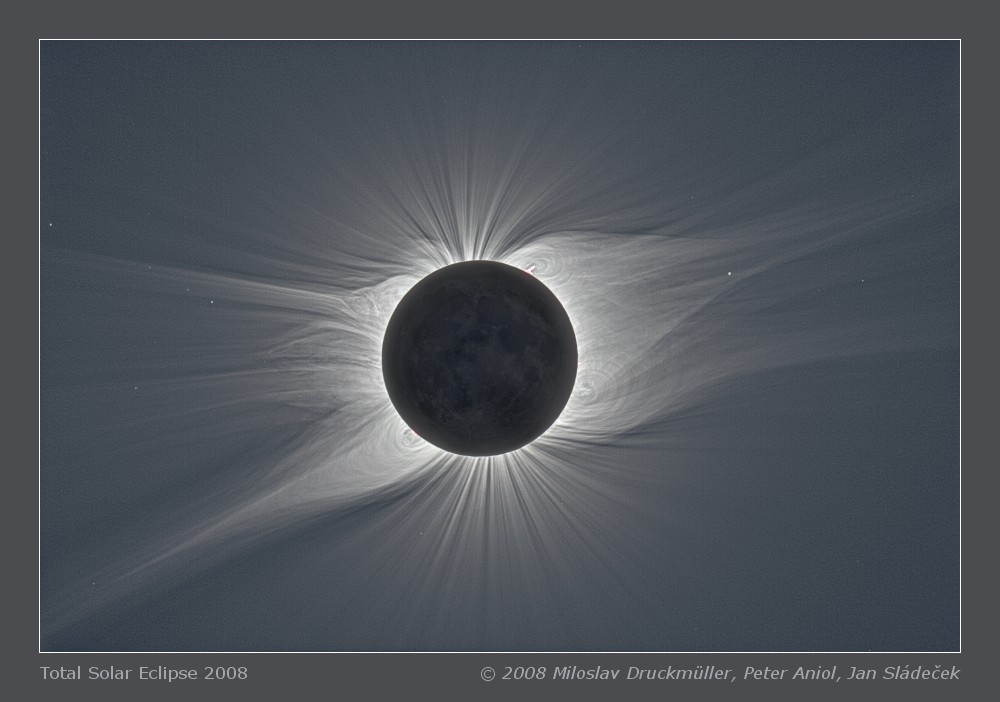
Corona up to 5 solar radii
About 300 images were used for the creation of this image. 22 images were taken during the eclipse, all
others were calibration images (dark frames, flat-field images) taken immediately after the eclipse.
Canon EOS 350D digital camera was equipped with my old well-tried Russian Maksutov-Cassegrain
6.3/500 mm. The focal length of 500 mm is equivalent to 800 mm for a full-frame camera. The
position of the Moon represents the situation 62 seconds after the second contact i. e.
11:04:37 UT (18:04:37 local time). The display of the solar corona, lunar surface and stars in
the resulting image are highly beyond the ability of human vision during the eclipse. The weakest
stars visible in the image are of about magnitude 10.
Click on the image or on the following reference to display the
higher resolution image version (2.6 MB, PNG format).
|
| Image | Tse2008_500_mo1.jpg |
| Date | 01. 08. 2008 |
| Time | 2nd contact 11:03:35 UT, 3rd contact 11:05:39 UT
Total eclipse duration 2 m 4 s |
| Place | Mongolia, Bor Udzuur |
| Coordinate | 45° 43.251' N, 92° 06.837' E, 1223 m altitude |
| Conditions | Excellent - clear sky, altitude of the Sun above the horizon 22° |
| Optics | Maksutov-Cassegarin 3M-6A, 6.3/500 mm |
| Camera | Canon EOS 350D digital camera (ISO 100) |
| Exposure | 1/125 s - 8 s |
| Processing | Composition of 22 images. Eclipse images calibrated by means of dark frames and flat-fields, aligned by means of phase correlation, composed by means of LDIC 5.0 software, processed using Corona 4.1 in order to visualize coronal structures. Final processing was done using ACC 6.1 software.
Image processing by Miloslav Druckmüller |
| Software | Astro D3F 2.0, PhaseCorr 6.0, LDIC 5.0, Corona 4.1, Sofo ACC 6.1 |
| Orientation | Image must be rotated 8.2° clockwise to achieve standard orientation i. e. North up. |
| Copyright | © 2008 Miloslav Druckmüller, Peter Aniol, Jan Sládeček |

|
Miloslav Druckmüller
Institute of Mathematics, Faculty of Mechanical Engineering
Brno University of Technology, Czech Republic
druckmuller@fme.vutbr.cz
|
Page last update: 27.11.2019
|
|

